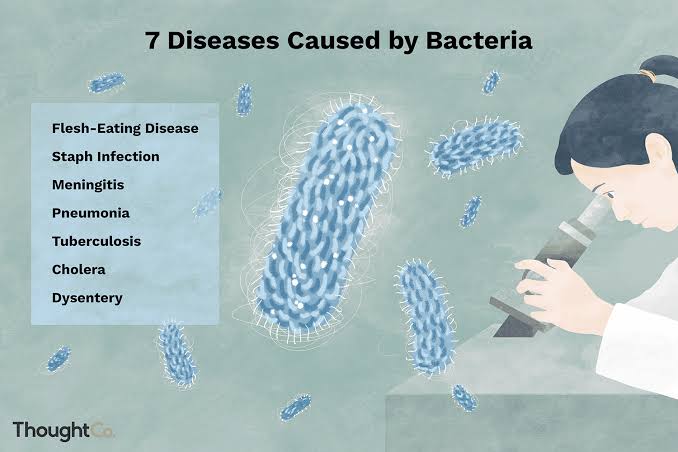
Diseases caused by bacteria
tetanus
Causes a family of bacteria known as Clostridium tetani (in English: Clostridium tetani) tetanus (in English: Tetanus); It is a type of deadly bacterial infection due to the secretion of the spores of this bacteria to a neurotoxin that affects the brain and nerves, in addition to many other symptoms. Difficulty breathing and severe muscle spasms. Tetanus bacteria are found in dust and are transmitted to the body in several ways, including; soiling a skin wound with dirt carrying bacteria, or a person being pricked with a contaminated needle. The infection begins with initial symptoms that include fever, headache, and diarrhea, and if the infection is left untreated, it develops into fatal symptoms that we mentioned above. Giving a tetanus vaccine is the best way to prevent infection. This is because the treatment developed for tetanus is not effective.
Syphilis
Syphilis falls under the list of sexually transmitted diseases, where the patient suffers from sores that appear on the genitals caused by the bacteria Treponema pallidum, and the infection is transmitted by direct contact with these sores and sexual contact, and it also spreads from the infected mother. to the fetus. Syphilis is divided into four phases, namely; The primary, secondary, stagnant, and tertiary phases. Symptoms vary according to the phase the patient is in. It starts with ulcers at the sites of the initial infection, which includes the genitals, the rectum, and around the mouth in the initial phase, to end with many health problems and the impact of various organs of the body in the tertiary phase. Like the brain, the heart, and others
pseudomonas infection
Pseudomonas bacteria are most common in moist places. such as soil, plants, and water. Healthy people are less susceptible to infection, but infection with weak immunity leads to severe symptoms that vary according to the affected organ. Lung infection, for example, causes pneumonia, with symptoms that include fever, chills, cough with or without sputum, and difficulty breathing as well. As for bacteremia (in English: Bacteremia), resulting from the spread of these bacteria in the blood; It leads to a significant decrease in blood pressure in what is known as a hemodynamic shock, which in turn fails the work of many organs. like the kidneys, the heart, and the liver. The eyes, skin, ear, etc. can be infected with the same bacteria, but with different symptoms.
Osteomyelitis
Staphylococcus aureus bacteria reach the bone and its marrow; Through surgical work in the bone and the presence of an open fracture, or through the bloodstream, causing osteomyelitis (in English: Osteomyelitis); Which is a serious disease, although it rarely occurs, and may affect children and adults. The presence of certain diseases and causes increases the risk of developing osteomyelitis. Such as diabetes, rheumatoid arthritis, poor blood supply, taking some intravenous medications, recent bone injury, and others. Doctors rely on blood tests, x-rays, magnetic resonance imaging (MRI), and bone swabs, followed by a bone biopsy to confirm osteomyelitis. A biopsy helps prescribe the best medication to treat the condition, depending on the type of bacteria causing it.






